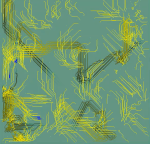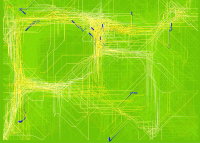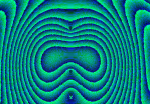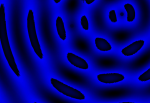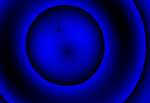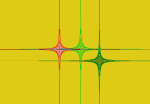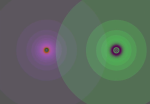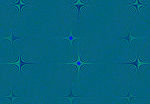Op Art and More
Sound and Waves - Sound Pattern - Soundplay
Sound Machine
The sound images and tones are intended to be reminiscent of the jazz-rock groups Soft Machine and Kraftwerk
and especially of Iannis Xenakis
Sound images from the series "music non stop" also have a connection with the philosophy of Maha Ati
